
After more than 35 years of operation, TBI is closing its doors and our website will no longer be updated daily. Thank you for all of your support.
Director’s chair – why Hollywood’s directors are targeting TV
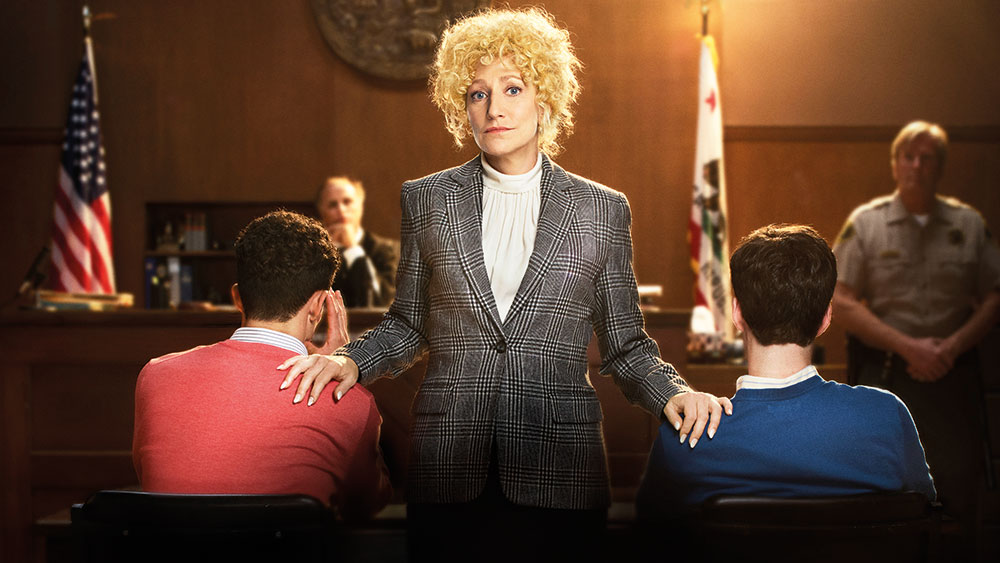 As television welcomes Hollywood’s biggest names, four top directors talk to Kaltrina Bylykbashi about bringing cinema to the small screen.
As television welcomes Hollywood’s biggest names, four top directors talk to Kaltrina Bylykbashi about bringing cinema to the small screen.
Just this year the TV industry has welcomed renowned feature film directors from the Coen Brothers to Nicolas Winding Refn and Yorgos Lanthimos; an extension of the wealth of investment, creativity and talent brought to scripted drama in the past few years, or the ‘golden era of television’.
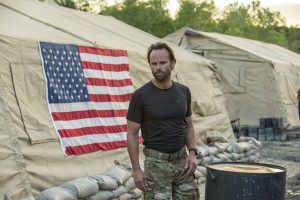 These directors are flocking to TV, along with a host of high profile colleagues, as opportunities to create great cinematic content shifts from film to smaller screens. One of these individuals is Kimberly Peirce, the director of the 1999 movie hit Boys Don’t Cry, who has gone on to direct shows such as The L Word, I Love Dick and most recently History’s military drama Six (right).
These directors are flocking to TV, along with a host of high profile colleagues, as opportunities to create great cinematic content shifts from film to smaller screens. One of these individuals is Kimberly Peirce, the director of the 1999 movie hit Boys Don’t Cry, who has gone on to direct shows such as The L Word, I Love Dick and most recently History’s military drama Six (right).
She says: “Earlier on in our world, television wasn’t as interesting to us feature film makers because it didn’t give us the chance to shoot cinematically or go deeply into character stories.
“In the last ten years, when you see this explosion of content, it’s extraordinary what we’ve come to be allowed to do. I would even be careful about using the term television, not because it’s a bad word, but we’re in an area where there’s cable or what we’re calling ‘over-the-top’. The shape and size of what what you consider television is all over the place.
“It’s really in a moment where it’s offering up the opportunity to deal with almost any kind of character.”
Lesli Linka Glatter, a 2017 Emmy nominee as best director for her work on Homeland and director for Law & Order True Crime: The Menedez Murders (pictured, top), echoes this sentiment when speaking to TBI. She says that it doesn’t matter what medium, we’re in a “golden era of storytelling” across platforms.
“We’re telling incredibly compelling visual stories,” she adds. “As a result, all of the platforms that have arisen have blurred the lines between feature film and TV. These stories are exploring the human condition, they’re complicated, they’re layered and they’re deep.”
Television is now the most likely to look for innovative and creative work, and the area where a range of high quality scripts are administered has shifted particularly to cable and OTT. For this reason, many directors are shifting their attention from feature films, which often does not present as much flexibility in script as new shows, according to a range of directors TBI has spoken to.
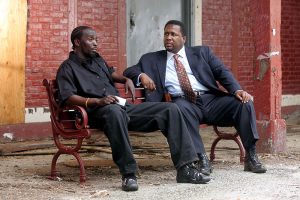 Ed Bianchi, who has worked as a director for over 20 years and caught the beginning of the ‘golden era’ working on shows such as The Wire (left) and Deadwood in the aughts, says: “You have feature directors who are trying to direct television now because the content is interesting to them – its better than a lot of scripts they’re getting for features. It’s a fertile place.
Ed Bianchi, who has worked as a director for over 20 years and caught the beginning of the ‘golden era’ working on shows such as The Wire (left) and Deadwood in the aughts, says: “You have feature directors who are trying to direct television now because the content is interesting to them – its better than a lot of scripts they’re getting for features. It’s a fertile place.
“One frees you up and the other one has too many restrictions. It’s a different type of skillset so it’s really changed the role of the director. You’re now brought into TV to add to the story and then elevate it.”
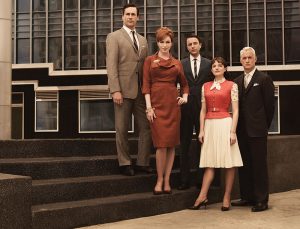 Bianchi has gone on to direct big hitters from Mad Men (right), Bates Motel and Baz Luhrman’s short-lived Netflix show The Get Down. He says, particularly for cable or online, TV shows are more frequently looking for a director’s input and what a director can bring to the story or the episode.
Bianchi has gone on to direct big hitters from Mad Men (right), Bates Motel and Baz Luhrman’s short-lived Netflix show The Get Down. He says, particularly for cable or online, TV shows are more frequently looking for a director’s input and what a director can bring to the story or the episode.
The main shift that has brought about this change is the increasing budget currently offered for TV projects across online, cable and networks. Setting the bar are online services such as Netflix, which has proposed a spend of US$6 billion by the end of 2017 and US$7 billion by end-2018. Amazon is looking set to spend $4.5 billion for the end of 2017, Hulu around US$2.5 billion and networks such as HBO around US$2 billion.
Peirce says: “When I worked on a feature film I could get the steady cam for whatever days that I needed, could get the cranes for whatever days that I needed, and I could make sure that my special effects and my visual effects were adequate to the story, because I had a lot more money and a lot more days.
“When you used to look at television or internet you thought, ‘Well, we can’t really do the work that we do in cinema’. Now we can. The amazing thing when I go work on Six is if I need a steady cam for that scene I get a steady cam; if I need a 50-foot crane to be able to carry the characters through the battle scene, I get that. If I need to get mist in the background or I need to have blood or I need an explosion, I can get all that.
“Years ago you probably wouldn’t have been getting that in television, because the budgets weren’t there, but also because the technical expertise wasn’t there. It also cost a lot more to get it done and now we can do it more efficiently and cheaply, and so as a director who loves to tell great stories, using all kinds of equipment and all kinds of people, I suddenly can work either in features or in this other medium of television or internet and still be cinematic.
“Six wouldn’t have existed ten years ago because we didn’t have the know how.”
The new extravagance of the TV industry is clearest with Netflix’s The Get Down. The show was said to have cost US$120 million. By comparison, one of the biggest movie features of the year, Wonder Woman, had a budget of US$149 million.
While the show was unusual in its production and was cancelled in May this year after failing to connect, it shows how much is going into these productions. Plus, of course, its creator and director is Baz Luhrman, that well known feature film director of Romeo + Juliet and The Great Gatsby.
Ed Bianchi directed six episodes. He says: “That was a very unique show. It didn’t run like any other television show that I’ve ever worked on and that had to do with Baz and his process, which was ever evolving. “You had to be on your game, as it was changing all the time, but they did give you the resources to make it happen, which was wonderful.”
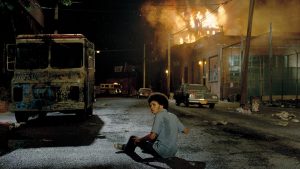 However, as The Get Down (right) shows, bringing ambitious projects to TV may not always work. The Wachowski sister’s Sense 8, filmed across many countries, proved too big a project as Netflix cancelled it earlier this year, along with Gypsy – directed by Fifty Shades of Grey’s Sam Taylor-Johnson.
However, as The Get Down (right) shows, bringing ambitious projects to TV may not always work. The Wachowski sister’s Sense 8, filmed across many countries, proved too big a project as Netflix cancelled it earlier this year, along with Gypsy – directed by Fifty Shades of Grey’s Sam Taylor-Johnson.
Not all shows are born equal, and Bianchi says that one of the biggest challenges for a television director today is the expectation of cinematic work and the reality of a budget that doesn’t support that vision.
“The big difficulty in most shows is that you just don’t have enough money, even in cable, but they still want the material to be elevated,” he says. “They want it to be more like a movie than a television show, but they don’t always give you the money you need to do that.
“You really have to be smart in the way you work and I would say that’s the most difficult thing – to keep the work elevated with the budget that you have.”
For Peirce, the shifts in budget and the accessibility to creative work has made the quality of television production close to independent film in nature, repeating a notion TBI has often heard from film talent.
“Cable is really going down the road of independent cinema and great old time cinema because it’s giving you great production values, extraordinary characters, great storylines and deep intimacies.”
Despite this move to cinema-like content, the Welsh director of hit UK show Broadchurch, Euros Lyn, says that in television, “the writer is still king”, with best results coming out of a strong partnership between both writer and director.
“However, more and more, audiences are choosing to watch a series because it’s ‘directed by’ Steven Soderbergh or Jane Campion,” he concludes.


